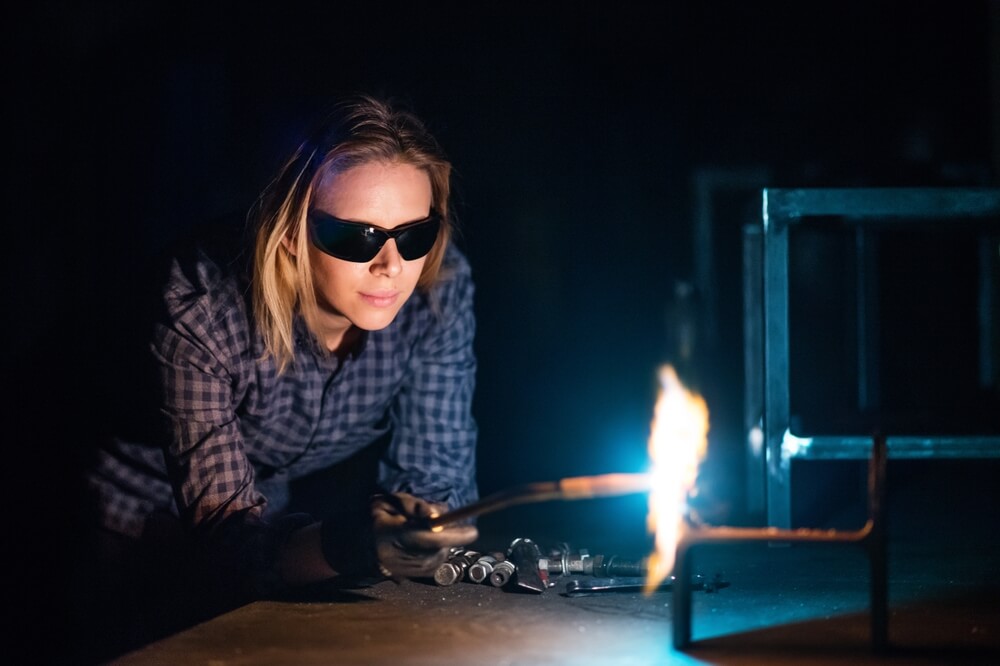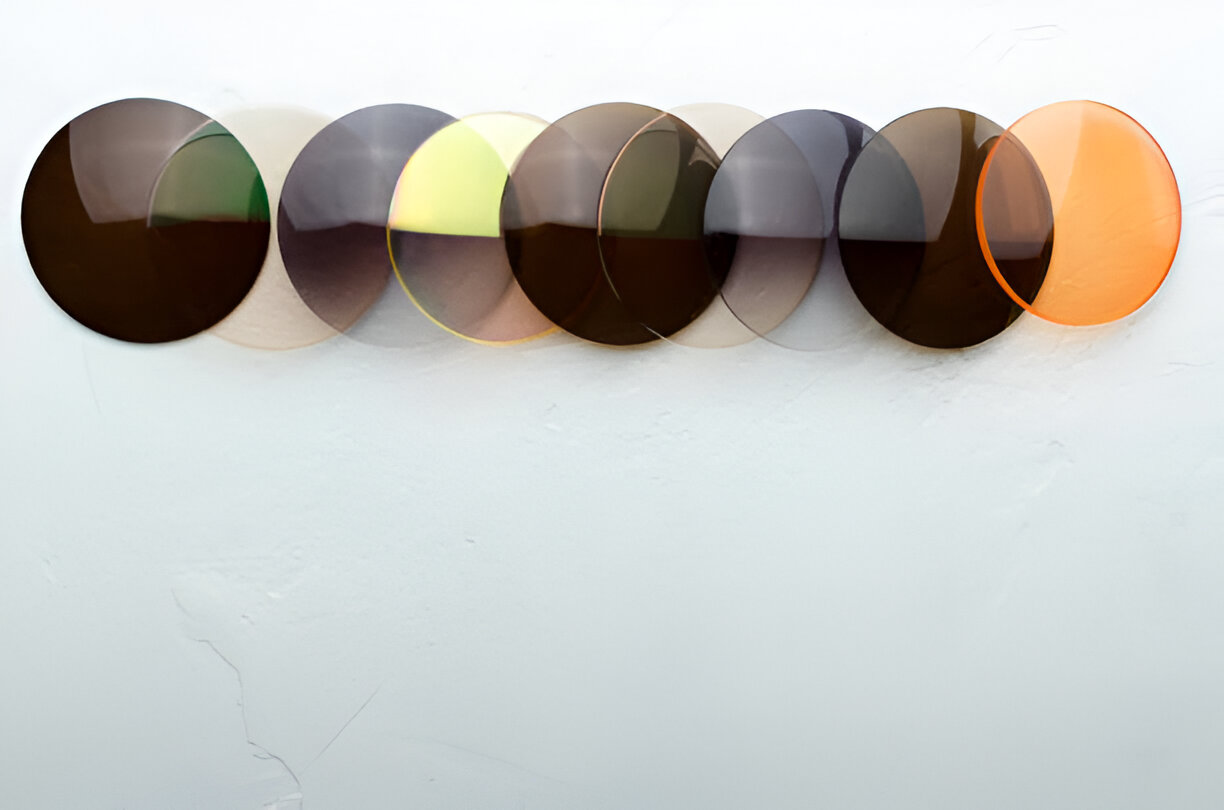
Blog
How To Prevent Eye Injuries In The Workplace?
Notably, over 2,000 American workers have eye injuries at work each day that necessitate medical attention. However, 90% of these kinds of eye injuries can be avoided or at least reduced, according to eye doctors and safety experts, if proper eye protection is worn. Getting scratches on the cornea or getting foreign objects or chemicals in the eyes are common workplace eye injuries.
Exposure to ultraviolet or infrared radiation and steam burns or liquid splashes into the eyes are other common causes of eye injuries. Additionally vulnerable to catching infectious diseases through eye contact are workers in the medical area labs janitorial services and other industries.
Some infectious diseases are transmissible through the mucous membranes of the eyes. This may occur if you touch your eyes with infected fingers or other objects come into close contact with blood splashes or breathe in respiratory droplets from coughing. Two primary causes of eye injuries occur in the workplace.
- The proper eye protection was absent from them.
- Their kind of protection was too strong for the job.
According to a Bureau of Labor Statistics survey about three out of every five workers who suffered eye injuries did not have eye protection on at the time of the incident. These workers frequently expressed the opinion that in that particular situation, protection wasn't required.
The Occupational Safety and Health Administration (OSHA) states that when there is a reasonable probability of harm that may be avoided with protective gear, workers must wear eye and facial protection.
When there is an eye threat, personal protection equipment (PPE) such as face shields, safety glasses, or full-face respirators must be worn. Several factors, such as the type of danger exposure, other protective gear worn, and the user's visual needs, determine how much vision protection is necessary.
Which Workplace Hazards Could Cause Visual Impairments?
When the potential eye hazards listed below exist workplace eye protection is required.
- Chemical splashes: If you work with or are near chemicals you are aware that they can splash and cause burns on the face and eyes. Chemical burns can cause serious complications including blindness in extreme circumstances.
- Tool-related impact injuries: One of the most frequent sources of occupational eye injuries is industrial and construction sites. Power tools welding equipment and lawn equipment are just a few examples of the tools that can cause eye injuries while used for work.
- Foreign items in the eye: Flying wood and metal chips are examples of debris that can get caught in the eye from the hands or the air. Foreign object injuries can produce scratches and abrasions on the cornea. Sawing masonry work and chipping are common work activities that result in foreign objects in the eyes. Injuries from flying debris can also result from woodworking sanding and drilling.
- Blood splashes: First responders police officers and medical personnel frequently come into contact with blood. Blood can spread infections like staph HIV and hepatitis when it splashes into the eye.
- Radiation exposure: Working near radiation is a possibility in some professions. If appropriate precautions are not taken radiation exposure to the eye can result in burns and irreversible damage. There are several visual risks in some work environments. Every hazard is considered when choosing the appropriate Z87 safety glasses.
The term digital eye strain sometimes referred to as computer vision syndrome refers to a group of vision and eye-related problems brought on by prolonged use of computers tablets e-readers and cell phones. The average American worker uses a computer for seven hours a day whether they work in an office or from home.
Aiming to prevent digital eye strain in the workplace the American Optometric Association is educating employers and employees during March Save Your Vision Month. The 20-20-20 rule states that you should take a 20-second break every 20 minutes to look at something 20 feet away to help reduce digital eye strain. Some occupations carry a greater risk of eye injuries than others.
- Building.
- Producing goods.
- Exploration.
- Carpentry.
- Auto maintenance.
- Electrical labor.
- Water supply.
- Forging.
- Upkeep.
The types of clear safety glasses you need to wear will depend on the threats in your workplace. If you work in an area where dust-flying items or particles are present, you need to put on safety glasses with side shields.
- Safety goggles are required if you are handling chemicals.
- Use specialized safety glasses, goggles, face shields or helmets made for that purpose if you are working near hazardous radiation sources like welding lasers or fibre optics. Recognize your responsibilities at work.
- For many work environments, side shields added to your regular (dress) glasses do not offer enough protection to comply with OSHA regulations.
- Employers must also take action to create a safe workplace. This comprises:
- Evaluating the workplace's eye hazards.
- Minimizing or eliminating eye hazards when practical.
- Providing and mandating the use of appropriate stylish safety glasses for employees.
Your optometrist can help you and your employer assess possible eye risks at work and decide what kind of eye protection you might need.
You must read” Importance of safety glasses at work”
How Can You Keep Your Eyes Safe From Harm?
You can take the following four steps to prevent injuries to your eyes:
- Recognize the risks to eye health at work.
- Before beginning work remove any potential hazards with work screens machine guards or other engineering controls.
- Put on appropriate eye protection.
- Maintain proper care of your safety sunglasses and get them fixed if they break.
Every task should have its hazards evaluated to determine the best men’s safety glasses to wear. There are various kinds of eye protection.
Safety glasses both prescription and nonprescription. Safety glasses are made to offer far greater eye protection, even though they may appear to be typical dress glasses. Compared to conventional eyeglasses, the lenses and frames are far more robust. Safety glasses need to adhere to American National Standards Institute (ANSI) requirements. Search for the Z87 mark on the frame or lens. In general working environments where dust chips or flying particles may be present safety glasses offer eye protection. Side protection can also be obtained with wraparound-style safety glasses and side shields.
Polycarbonate, plastic, and TrivexTM materials are available for safety lenses. The highest degree of impact protection is offered by polycarbonate lenses though all four varieties must either match or surpass the minimal specifications to safeguard your eyes.
Protecting against impact dust and chemical splash is possible with goggles on. Foam-padded goggles are very resistant to impacts just like safety glasses. They also offer a safe shield around the whole eye shielding it from all angles of potential danger.
Goggles can be worn on top of contact lenses and prescription glasses. Helmets and face shields. Full-face shields or over-prescription goggles provide protection when working with chemicals, heat, or blood-borne pathogens. For welding and handling, molten materials helmets are utilized. It's not enough to limit protective eyewear to face shields and helmets. To protect the eyes when the shield is lifted, they must be worn in conjunction with safety glasses or goggles.
When using lasers or welding, wear goggles or helmets with specific filters to shield your eyes from optical radiation exposure. For protective effectiveness, single-vision safety glasses must fit correctly. It's also important to maintain eye protection equipment correctly. Devices that are dirty and scratched make it harder to see create glare and increase the risk of accidents. Wearing the proper protective eyewear can help keep you safe from any kind of eye hazard especially when combined with machine guards screened or divided workstations and other engineering controls.
Is It Safe To Wear Contact Lenses For Industrial Jobs?
There isn't much protection that contact lenses can offer against occupational eye hazards. Wearing contact lenses does not, however, appear to raise the risk of eye injury. Because contact lenses frequently improve vision in the workplace, they may increase worker productivity and safety.
The field of vision for people wearing contact lenses is typically greater than that of people wearing glasses. Additionally, they frequently have less visual distortion—especially when prescribed higher-power lenses.
Furthermore, using contact lenses rather than glasses can enhance the comfort and fit of eye protection gear like full-face respirators and splash goggles. According to the American Optometric Association, employees should be able to wear contact lenses in most eye-hazardous situations.
Nonetheless, under the specifications for all workers performing the same job, these workers must wear eye protection over contact lenses. There are situations where the safety of contact lenses needs to be evaluated case-by-case such as when there are dangerous chemical fumes present.
Verify your employer's safety guidelines before wearing contact lenses. To find out if wearing contact lenses at work is safe for you and your employer consult an optometrist.
You must read” Prevent Eye Injuries”.
In The Event Of An Eye Emergency, What Should Be Done?
After an injury get medical help as soon as you can especially if you experience injury, eye pain blurred vision or loss of vision. It is advisable to perform a few basic first-aid measures until medical assistance arrives. Treatment for chemicals in the eyes:
- For at least fifteen minutes immediately rinse the eye with water. Use a garden hose to submerge the eye in water from a clean container or run a faucet or shower over it.
- Take out your contact lenses right away if you wear them before cleaning your eyes.
- Avoid attempting to use other substances to neutralize the chemical.
- Avoid applying bandages to the eye.
- If flushing occurs get medical help right away.
Treatments For Ocular Particles:
- Avoid rubbing your eyes.
- Use an artificial tear solution to irrigate the affected eye or try letting your tears wash the speck away. To get rid of the particle, try lifting the upper eyelid down over the lower eyelid and outward.
- Cover the affected eye, apply a thin bandage, and get medical attention if the particle does not wash out. If untreated for several days certain particles—especially metallic ones—can result in rusting spots on the cornea. Do not postpone getting medical attention if you are unsure if the object is gone.
Treatments For Foreign Objects To The Eyes:
- Apply a cold compress gently, taking care not to press against the eye. Add crushed ice in a plastic bag gently to the injured eye to lessen discomfort and swelling.
- If you experience excruciating pain or vision loss get medical attention right away.
Treatments For Cuts And Punctures To The Eye Or Eyelid:
- Avoid wiping out the eye.
- If something gets lodged in your eye, do not try to get it out.
- Use a hard shield to protect the eye, such as the bottom half of a paper cup.
- Seek emergency medical attention.






Leave your comment